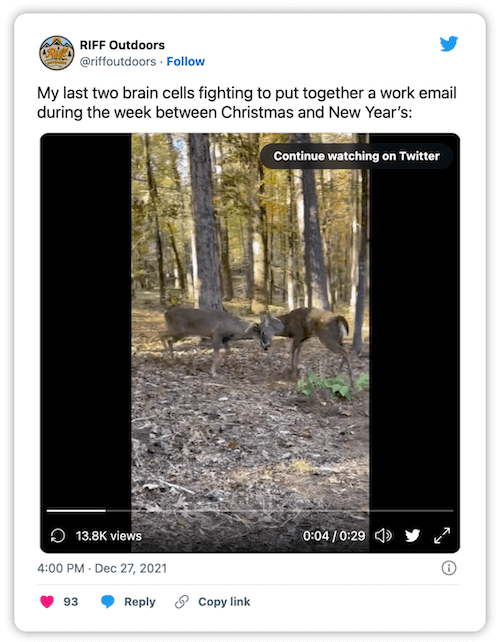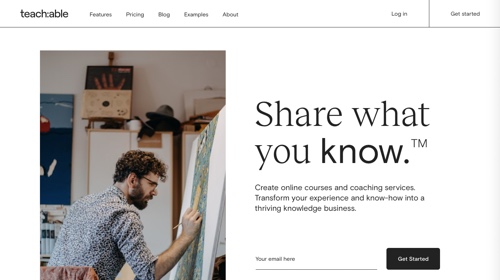
“Social media has made luxury a level playing field – whether you are a brand or a consumer,” says Threads’ Sophie Quy. “As a brand you can present yourself in the way that you want to, whether you are Dior or a small up and coming designer. As a consumer, you can discover any brand you want and make informed purchasing decisions through brands and multi-brand partners’ content.”
Gowing suggests that this depends on the demographic mix, “because if you’re looking at an older consumer, they are very much used to that tactile approach to shopping.” In contrast, she suggests that ecommerce is embedded in millennial culture, mainly due to this demographic being “used to purchasing something and sending it back if they don’t want it.”
Luxury brands want to resonate with younger consumers
“The other arm of what we are trying to do is really harness influencers, whether that’s from an awareness perspective or a content perspective; we are utilising them as the style authority to really elevate the brand.”
“So, yes you’re not in store and having that personal connection, but I think having a WhatsApp conversation with your personal shopper is more personal than any in-store connection could ever be,” Quy suggested, perhaps disclosing her own millennial status here. But indeed, Quy’s willingness (and that of her counterparts) to use these channels in order to interact with brands indicates that the leap to transactions isn’t too far off.
Radley’s Cassandra Gowing agrees that social, particularly Instagram, has changed the game for luxury brands. “Our traditional customer tends to sit on Facebook, is very open to having conversations, but also they like the products that they like – there’s not as much discovery,” she explained. To harness a younger demographic, Radley is now concentrating on Instagram – including Stories, Reels, in-feed, and predominately video content. “So, dynamic, fast-paced video content that shows our product in streets on London – very much how we think our millennial audience is wearing them.”
For Radley, this has resulted in a seamless transition in engaging young consumers during its own shift to becoming more digitally focused. And video content, Gowing suggests, is the key to answering the big questions throughout the luxury path to purchase. “I think you need to take it back to basics… If I’m purchasing a bag as a consumer, what do I want to know? I want to know how big it is. If it’s a cross-body, where does it sit on me? How many pockets has it got? It’s all those little details, and I think video content is an excellent way to tell that narrative.”
Social media makes luxury a level playing field
Similarly, Quy says that Threads, which offers styling advice and product recommendations via social and text, has resonated strongly with younger consumers, largely due to this demographic spending more time on social media and looking to discover new brands. Both behaviours align with Threads’ business model, which as Quy explained, has “pioneered a new shopping experience on social media and chat platforms; there is no app or website, everything we do is on the platforms our clients are already on.”
Gowing explains how Radley has seen a shift in terms of its consumer mix and the channels in which they purchase. “Traditionally, our customer base has always been 45+, [and] more of a bricks and mortar shopper,” she said, “whereas we’ve definitely seen the demographics [change], and more of an online mix in the past 18 months.”
Quy agrees, explaining how this kind of digital content is vital for the luxury fashion sector in particular. “If you can’t get to the store, how can you translate the wearability of something, or almost demystify it?” she asked. “You go into some of these stores and everything looks so glossy and beautiful, and actually, I just want to know how to wear it – can I wear it with jeans, or how do I style it?”
Fundamentally, Quy proposes that, within retail, there has also been a shift in terms of how younger consumers shop – which is not how brands expect them to.
For both Radley and Threads, the Covid-19 pandemic has spurred on a shift in ecommerce strategy, largely centred around a growing interest in luxury amongst younger consumers.
Despite an overall drop in sales in many categories of luxury, Bain research shows that, in 2020, the online channel increased its sales by 50%, nearly doubling its share to reach 23% of luxury sales globally (up from 12% in 2019). The same research suggests the online channel influenced 85% of luxury transactions globally.
While social media can certainly engage luxury shoppers, can it replicate the intimacy of the in-store customer experience?
Replicating in-store service through one-to-one chat
“As platforms introduce new functions, people are spending more time there, and they expect to buy a product there as well,” she confirmed.
This is not just about engagement; Threads uses data and insight to turn this into conversions. “Social media has completely changed the luxury platform… we know what drives engagement, what clients react to in terms of enquires, the brands that are selling – and we are really able to show these products in a way that [helps] the client understand them and ultimately they can end up purchasing them,” says Quy.
“Even before the pandemic, we had clients in their twenties, in London, who… weren’t going into stores,” she said. “They still expected access to the best products and brands, but they wanted it on their own terms.” Consequently, Threads aims to fulfil this need by replicating the look and feel of a brand through social media. On top, it aims to replicate customer service (and an elevated one-to-one luxury customer experience) via chat platforms.
Social media might typically be associated with fast fashion or DTC brands. However, the luxury sector is increasingly embracing social platforms.
Key to this is social media, as a sales and a service channel, according to Sophie Quy, Executive Vice President of Brands at Threads Styling; and Cassandra Gowing, Head of Social Media and Marketing at Radley London. They spoke to Econsultancy’s Rebecca Sentance during a recent ‘Future of Luxury Ecommerce’ panel session at Econsultancy Live. Here are some of the highlights.
Radley also plans to focus on TikTok next year – a platform where “millennials are actually the fastest growing audience,” said Goring.
These platforms can, crucially, connect brands with customers via shoppable content. “You swipe up from the Instagram story and you’re seamlessly connected to a highly trained Threads personal shopper who will then help you on your shopping journey,” Quy explains. “We have a global network of over 600 luxury brand partners; the aim is that we are connecting them with a client they aren’t engaging with through their stores or ecom – so we really see ourselves as that ultimate extension of the brand and showing their product in a way that we know resonates with younger consumers.”
“It’s how many minutes are spent on that channel – Instagram must be green with envy – it’s something like 86 minutes a day.” Alongside time spent, Gowing suggests that TikTok has also created a shift in terms of the sort of content brands are expected to put out. “Curated feeds are in the past, you need to be thinking about raw, real-time content that really engages the consumer,” she said.






